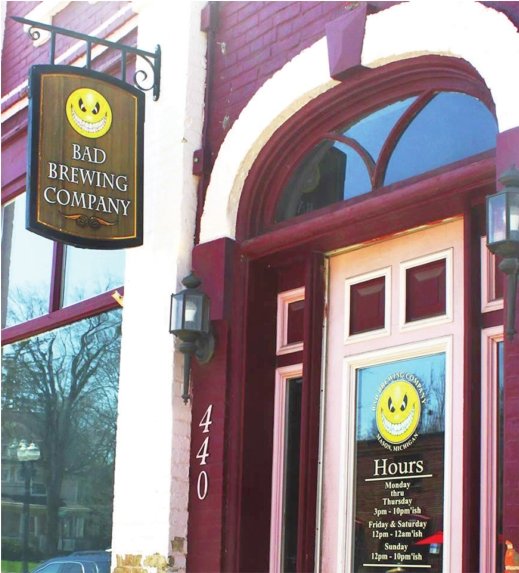
The gose style of beer, pronounce “goesuh,” like lagers or ales, is extremely old.
It has been known to be on the brink of extinction its entire life, due to its unique qualities. Modern brewers across the U.S. are finding new opportunities with the style, and are bringing it back into today’s market with more popularity than ever before.
Local brewers are also riding the gose train. BAD Brewing Co. in Mason has had goses on their tap list for quite some time, formerly offering a standard gose beer that was lighter in body, mouth-feel and flavor, as well as a tequila barrel-aged gose, which was much more robust in flavor with hints of lime.
Brian Rasdale, owner and head brewer at BAD Brewing Co., was first introduced to the style by a friend.
“People bring us beers from other states and places all the time to try. Someone brought us a gose a few years back, and we really enjoyed the style, so we wanted to try to make some,” Rasdale said. He produced his first gose beer about four years ago and has been experimenting with the style ever since.
Gose is thought to have originated from a small German town called Goslar. Salinity, or a salty taste, is a common mark of a gose beer. Gose was originally brewed with salt water, or added salt for taste — a quality that beer drinkers have come to either love or hate, with very few in between.
Typically lighter in flavor, mouth-feel and high in carbonation, the salt, as well as the coriander, another common flavor used in gose beers, can create a puckering or refreshing taste. You’ll often find citrusy notes such as lemon or lime in a gose, and those flavors are only accentuated when beer is soured.
“It’s a very old-school style. There are so many ways to make them,” said Rasdale.
“Some people use grain and lactic acid, but there are really tons of ways to make them. The most popular way right now is to sour them.”
Because the craft beer industry has been exploding over the past decade, brewers and beer connoisseurs alike are experimenting and trying new things that they wouldn’t have in the past, sour beers being one of the main examples.
Just ten years ago, sour beers were not on the market like they were today. Between 2015 and 2016 alone, the sales of sour beers in the U.S. went from 45,000 cases sold to 245,000 cases sold, according to the Brewers Association.
Gose beers are traditionally made mostly with malted wheat, but many are finding their own recipes with different grains.
Because of competition in the industry, brewers are constantly on the lookout for ways to put their stamp on each style, taking traditional style elements and making each their own. Rasdale is doing that with his goses by breaking from that majority wheat grain bill and instead using barley.
“We don’t use a ton of wheat here because that’s just our style,” said Rasdale.
“We go as traditional as possible, but we put our own twist on it. We would probably never win medals or anything like that because we make it how we want to.”
Goses are not being produced by larger producers, despite the success the little guys are seeing with it. Smaller craft breweries, like BAD Brewing Co., are able to do this because they operate on a smaller basis — allowing more creativity and variance in styles.
“That’s my thing about being so small.
We can play around and make weird beers that a lot of bigger places can’t. It would cost them so much money to experiment on that large of a scale,” said Rasdale, noting he only makes five barrels at a time.
“It’s a curse and a blessing. We’re selling a ton of beer, but it’s great for us to be able to have 21-23 beers on tap. Other breweries just can’t do that when they’re creating beer on such a large scale.”
Support City Pulse - Donate Today!
Comments
No comments on this item Please log in to comment by clicking here